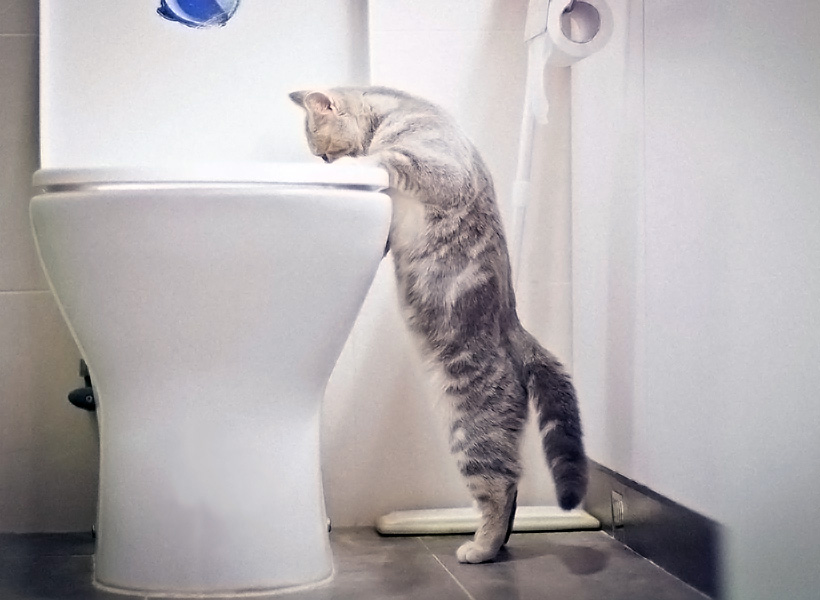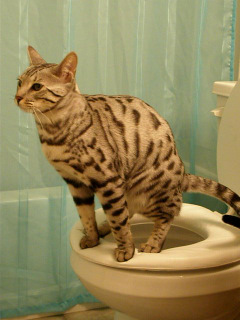The Risks of Flushing Cat Poop in Your Toilet - Preventive Steps
The Risks of Flushing Cat Poop in Your Toilet - Preventive Steps
Blog Article
Do you find yourself looking for selective information around Don’t flush cat feces down the toilet?

Introduction
As cat owners, it's necessary to be mindful of just how we throw away our feline pals' waste. While it may appear practical to purge pet cat poop down the bathroom, this method can have harmful consequences for both the setting and human health and wellness.
Alternatives to Flushing
Luckily, there are more secure and a lot more liable means to take care of cat poop. Consider the adhering to options:
1. Scoop and Dispose in Trash
The most usual approach of disposing of pet cat poop is to scoop it into an eco-friendly bag and throw it in the garbage. Make certain to utilize a committed trash inside story and deal with the waste quickly.
2. Usage Biodegradable Litter
Opt for eco-friendly cat litter made from products such as corn or wheat. These clutters are environmentally friendly and can be securely dealt with in the trash.
3. Hide in the Yard
If you have a backyard, think about hiding cat waste in an assigned location far from vegetable gardens and water sources. Make certain to dig deep adequate to prevent contamination of groundwater.
4. Set Up a Pet Waste Disposal System
Purchase a family pet waste disposal system specifically developed for cat waste. These systems use enzymes to break down the waste, decreasing odor and ecological effect.
Health Risks
Along with environmental problems, purging feline waste can additionally posture health threats to human beings. Pet cat feces might include Toxoplasma gondii, a bloodsucker that can trigger toxoplasmosis-- a possibly serious illness, specifically for pregnant ladies and people with weakened body immune systems.
Environmental Impact
Flushing pet cat poop introduces unsafe pathogens and parasites into the water supply, positioning a substantial threat to aquatic ecological communities. These contaminants can negatively impact aquatic life and concession water quality.
Conclusion
Responsible pet possession prolongs beyond providing food and shelter-- it also entails correct waste administration. By refraining from purging feline poop down the bathroom and choosing different disposal approaches, we can reduce our environmental impact and safeguard human health.
Why Can’t I Flush Cat Poop?
It Spreads a Parasite
Cats are frequently infected with a parasite called toxoplasma gondii. The parasite causes an infection called toxoplasmosis. It is usually harmless to cats. The parasite only uses cat poop as a host for its eggs. Otherwise, the cat’s immune system usually keeps the infection at low enough levels to maintain its own health. But it does not stop the develop of eggs. These eggs are tiny and surprisingly tough. They may survive for a year before they begin to grow. But that’s the problem.
Our wastewater system is not designed to deal with toxoplasmosis eggs. Instead, most eggs will flush from your toilet into sewers and wastewater management plants. After the sewage is treated for many other harmful things in it, it is typically released into local rivers, lakes, or oceans. Here, the toxoplasmosis eggs can find new hosts, including starfish, crabs, otters, and many other wildlife. For many, this is a significant risk to their health. Toxoplasmosis can also end up infecting water sources that are important for agriculture, which means our deer, pigs, and sheep can get infected too.
Is There Risk to Humans?
There can be a risk to human life from flushing cat poop down the toilet. If you do so, the parasites from your cat’s poop can end up in shellfish, game animals, or livestock. If this meat is then served raw or undercooked, the people who eat it can get sick.
In fact, according to the CDC, 40 million people in the United States are infected with toxoplasma gondii. They get it from exposure to infected seafood, or from some kind of cat poop contamination, like drinking from a stream that is contaminated or touching anything that has come into contact with cat poop. That includes just cleaning a cat litter box.
Most people who get infected with these parasites will not develop any symptoms. However, for pregnant women or for those with compromised immune systems, the parasite can cause severe health problems.
How to Handle Cat Poop
The best way to handle cat poop is actually to clean the box more often. The eggs that the parasite sheds will not become active until one to five days after the cat poops. That means that if you clean daily, you’re much less likely to come into direct contact with infectious eggs.
That said, always dispose of cat poop in the garbage and not down the toilet. Wash your hands before and after you clean the litter box, and bring the bag of poop right outside to your garbage bins.
https://trenchlesssolutionsusa.com/why-cant-i-flush-cat-poop/

I stumbled upon that write up about Can You Flush Cat Poo or Litter Down the Toilet? while doing a lookup on the search engines. You should take the opportunity to share this blog entry if you enjoyed reading it. Thank-you for taking the time to read it.
Click Here Report this page